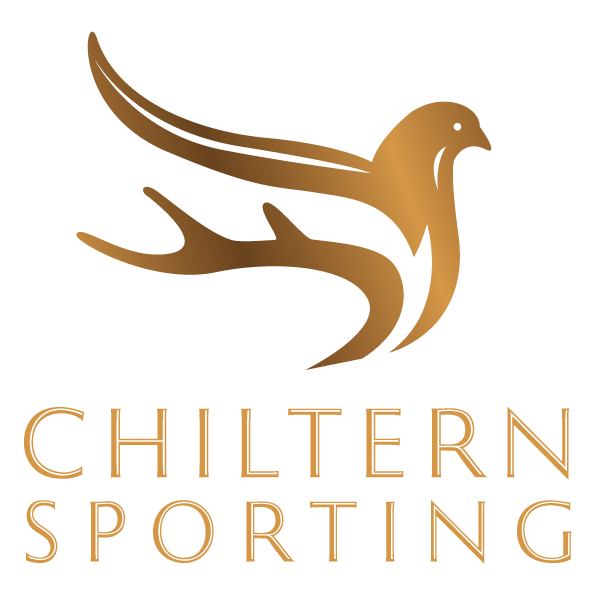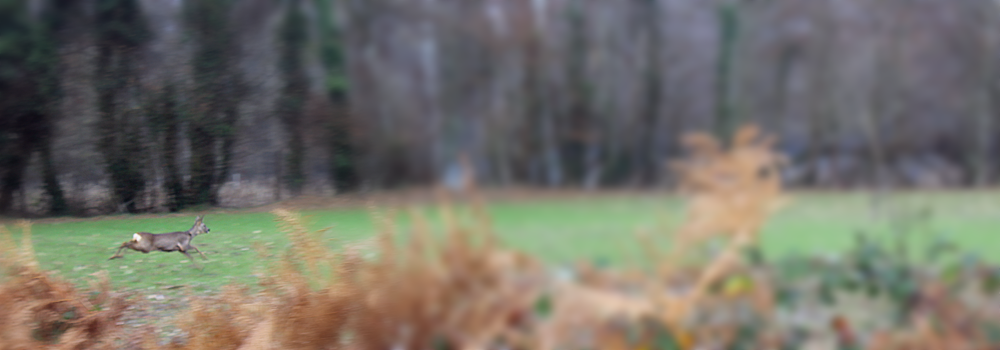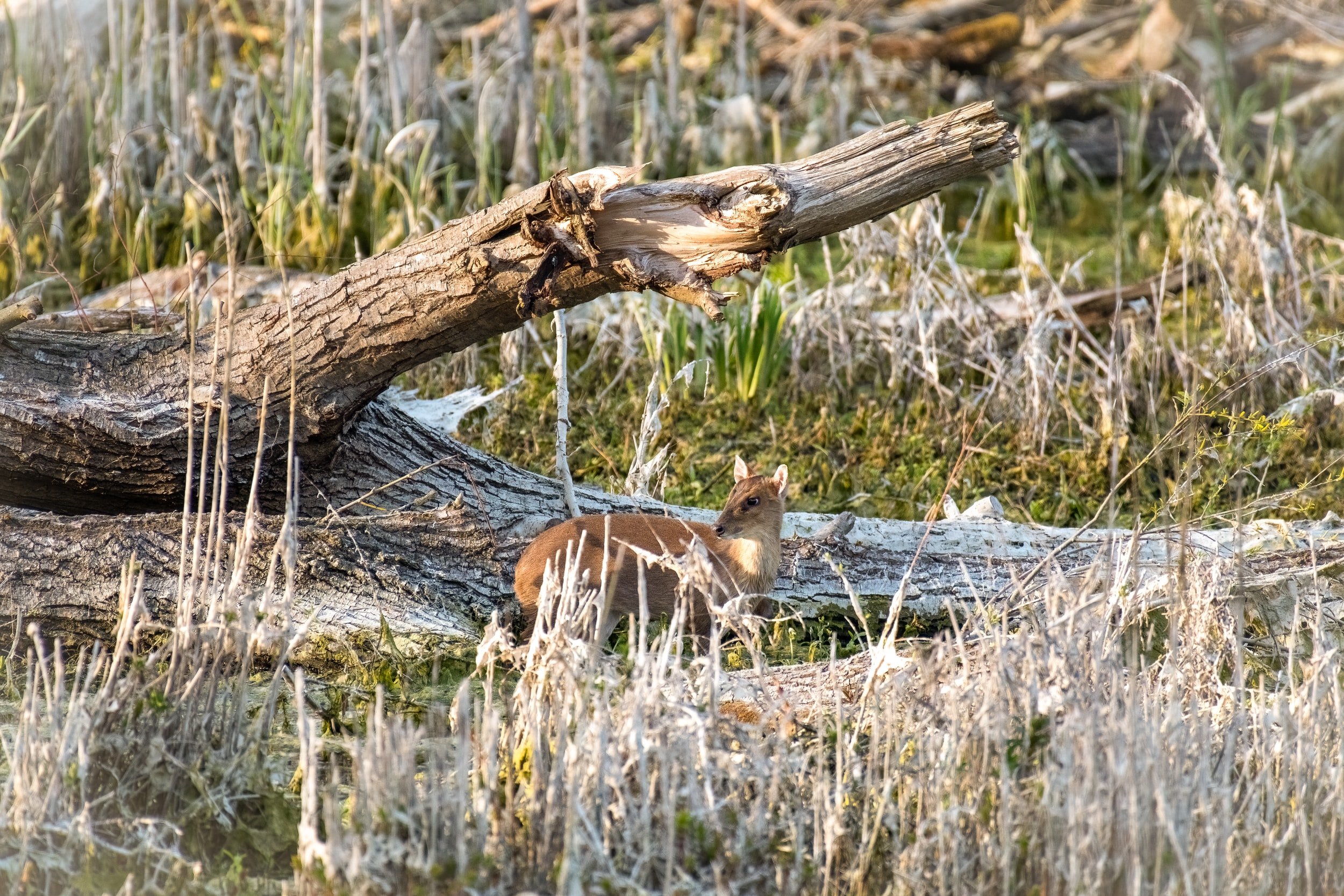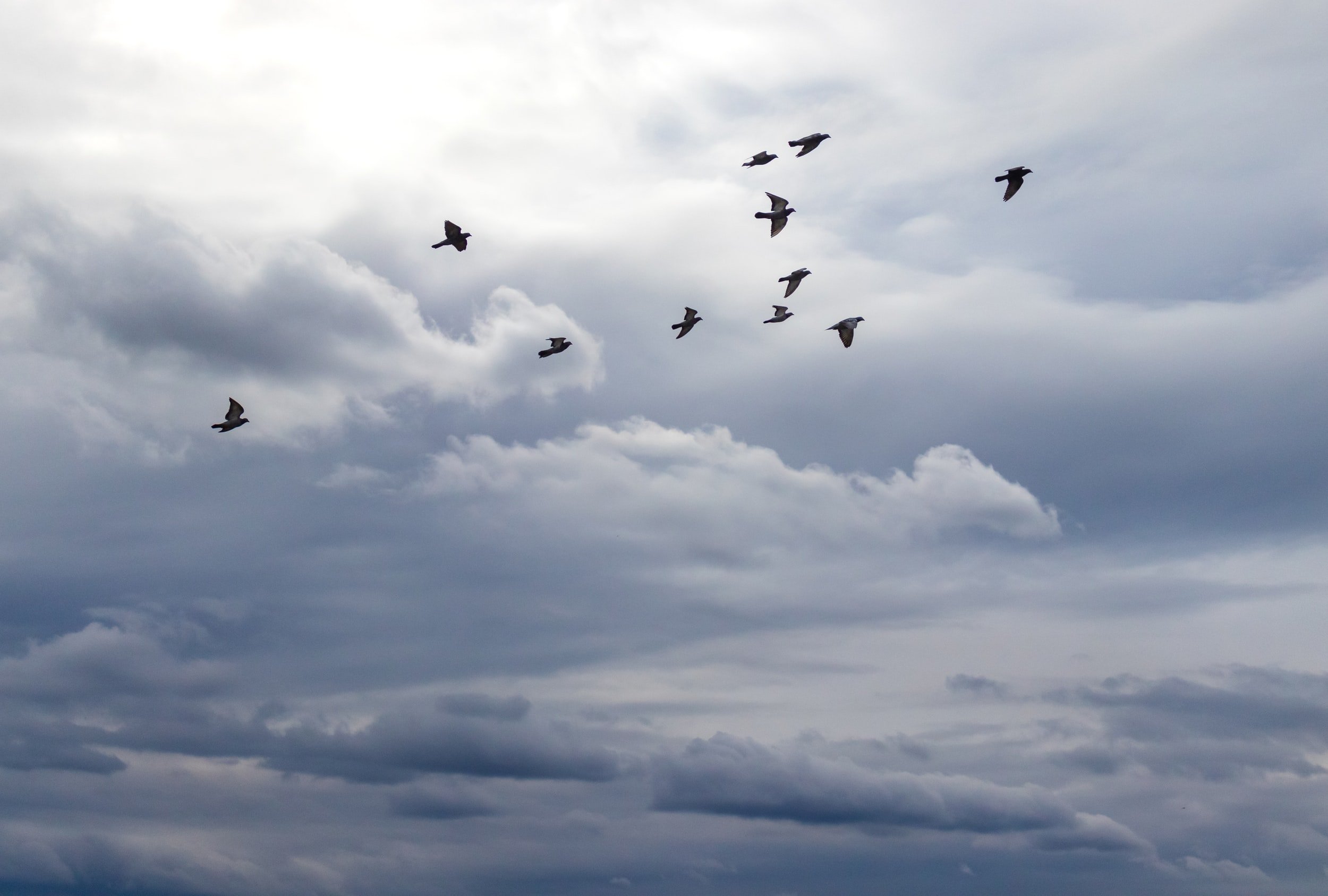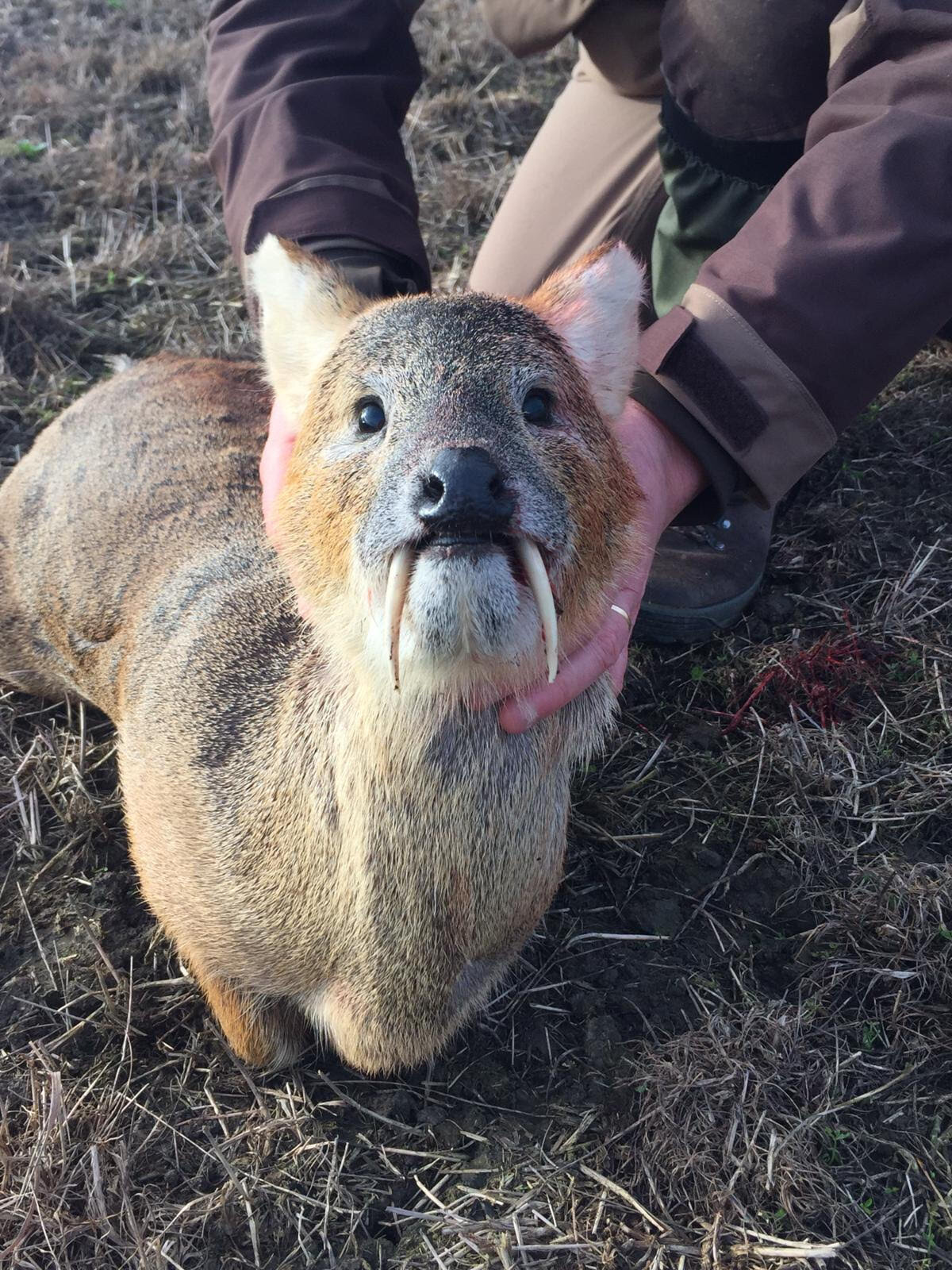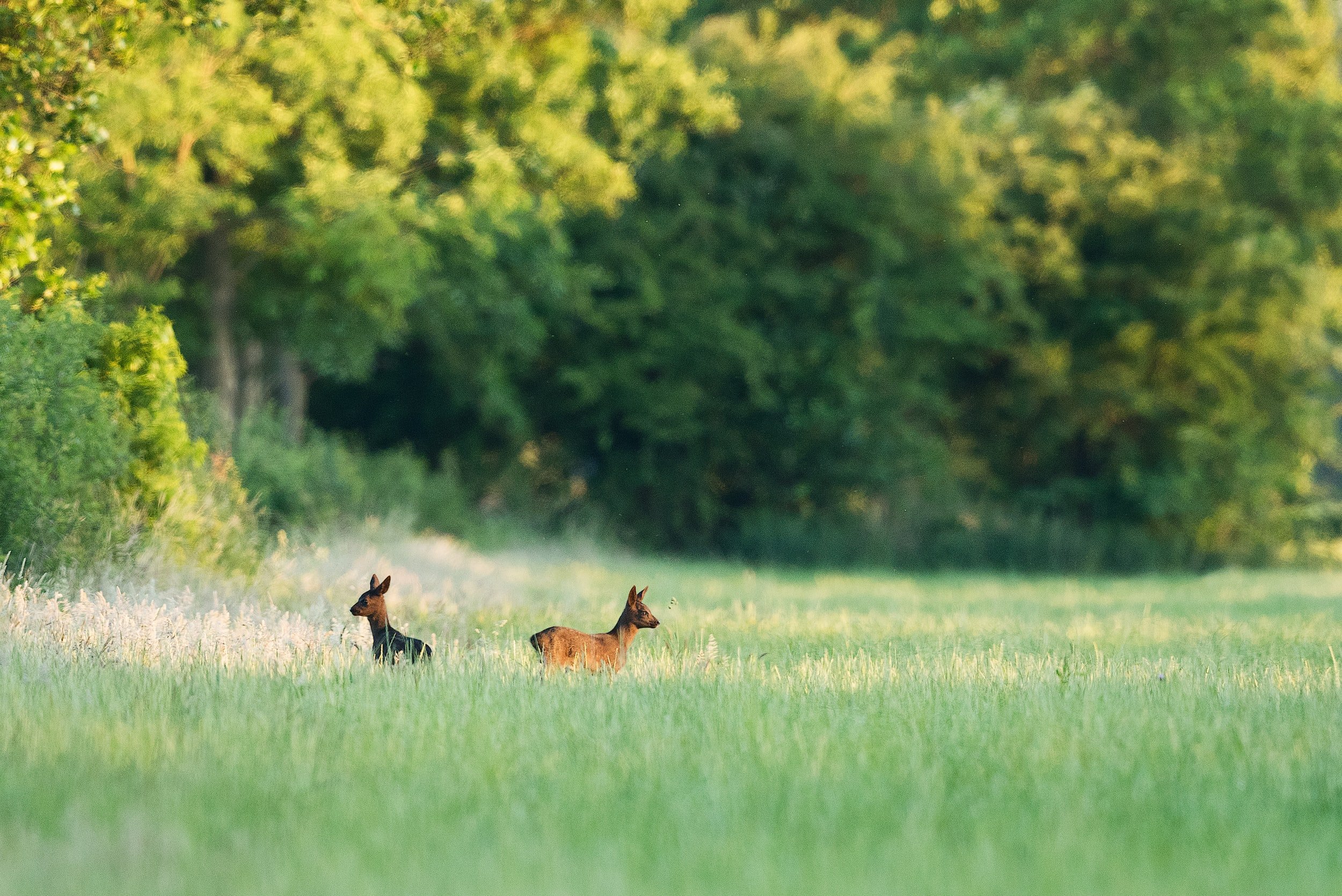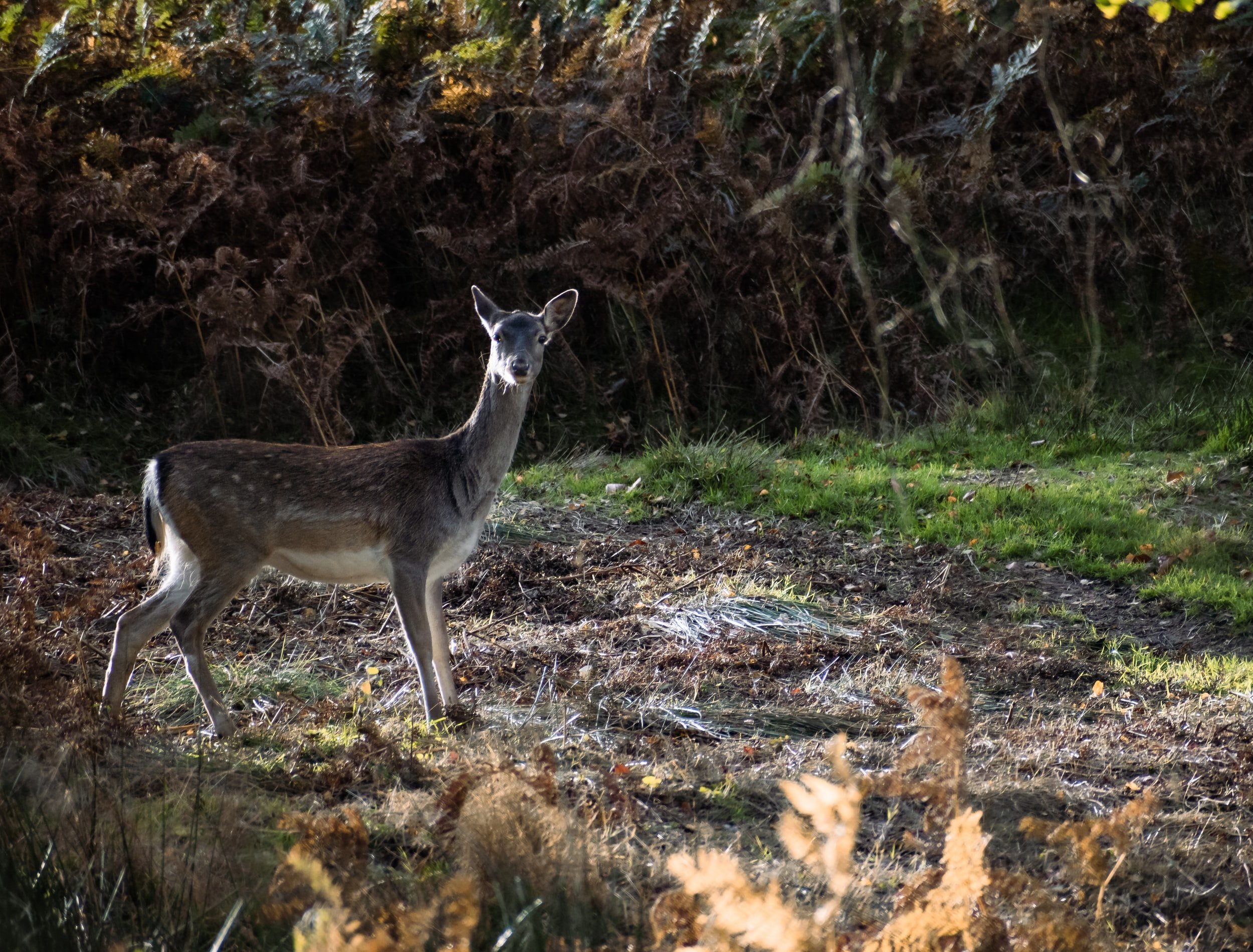Roe deer
An indigenous species
The roe deer are 100% native to the UK, they colonized Great Britain after the ice ages, before the separation from Europe. However Ireland and a few Scottish islands for example were already detached from the mainland and therefore do not hold any native roe.
Cohabitation
Often said to be more selective with their feeding habits than other deer species, they can cohabit perfectly well with other deer such as munjac and Chinese water deer. Whom, them, tend to feed predominantly on brambles and grasses respectively. Their height advantage may also play a part in this as they can browse at a higher level and therefore access to food smaller deer cannot reach.
Diet
All deer will eat shrubs, saplings, small branches, some crops and precious flowers. These reasons are why, in plantations and woodland regeneration sectors, too many deer is detrimental. In areas where they need to share the space with other animals, roe deer tend to eat the cover, which the other need to feed as well as hide their nests and take refuge from the elements.
Deer impact and wellfare
Deer dammage trees when the males mark their territories, when they scrape off the velvet from their newly formed hard anters each year. Sometimes the fraying and scaring on the bark can result in the trees dying.
Too many deer in one area can also bring about diseases or parasite infestations, some of which can be transmitted to livestock and humans. To prevent this and for the welfare of the deer themselves, we plan a yearly cull figure to keep their numbers at a healthy, natural threshold.
Roe are a true classic in many deer stalkers’ eyes, with their sporting qualities well recognised. They are still absent in some areas such as parts of Wales and Kent although they are spreading further every year.
Here in Oxfordshire and Buckinghamshire the strong numbers of roe present allow us to remove animals in good condition and healthy bodyweights, as well as consistent trophy quality.
